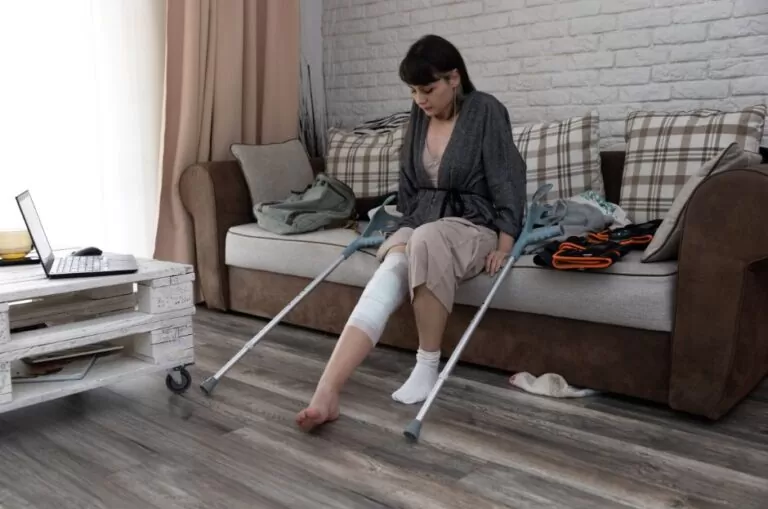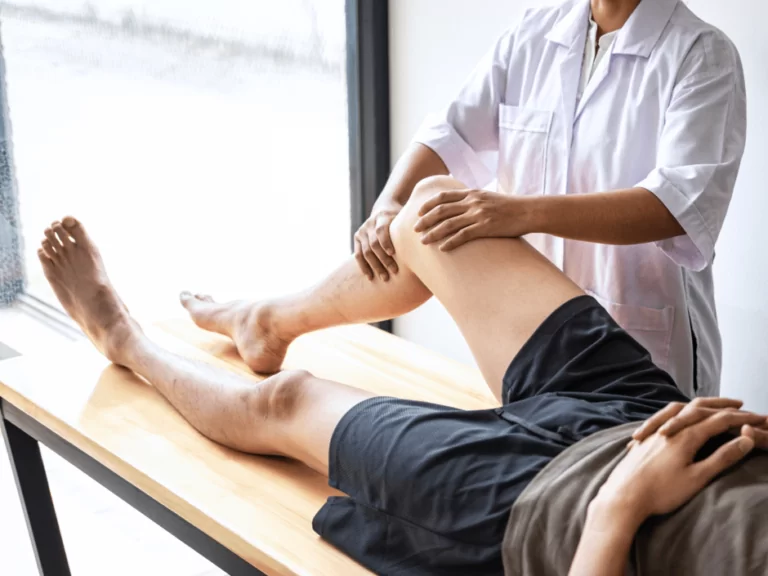Recovering from an Anterior Cruciate Ligament (ACL) injury can be a challenging journey, but with the right post-surgery rehabilitation plan, patients can achieve a full recovery.
At Healthproof, we are dedicated to helping you navigate the path to healing with our comprehensive ACL rehab post-surgery program. In this blog, we’ll provide you with essential information to support your recovery and ensure you regain full knee function and stability.
The Anterior Cruciate Ligament (ACL) is a crucial ligament in the knee that provides stability and helps prevent the knee from buckling during movement. This ligament connects the thigh bone (femur) to the shin bone (tibia) and it helps to control the back-and-forth motion of the knee.
The ACL is particularly important for activities that involve sudden stops, changes in direction, and jumping, making it essential for athletes and active people.
An ACL injury can occur for various reasons, such as abrupt pivots, awkward landings from a jump, or direct trauma to the knee. These injuries are common in sports like soccer, basketball, football, and skiing.
ACL injuries are classified into three grades:
The implications of an ACL injury go beyond immediate pain and discomfort. Without appropriate treatment and rehabilitation, an injured ACL can lead to long-term issues such as chronic knee pain, instability, and an increased risk of developing osteoarthritis. This is why post-surgery rehabilitation is essential.

Your doctor may prescribe pain medications, but it’s also important to incorporate other pain management techniques such as ice packs, elevation, and rest.
Keeping pain under control will allow you to participate in your rehabilitation exercises more easily.
Swelling is a common issue after ACL surgery. To reduce swelling, we recommend using ice packs regularly, keeping your leg elevated above heart level, and wearing compression bandages as advised by your medical team.
Proper wound care is essential to prevent infections. Keep the surgical area clean and dry, follow your doctor’s instructions regarding dressing changes, and monitor for any signs of infection, such as increased redness, warmth, or discharge.
During the first stages of your ACL rehab post-surgery, the focus is on regaining range of motion and reducing swelling. Early-stage exercises will include:

As you progress, more advanced exercises will be introduced to build strength and stability. These generally include:
In the first few weeks after surgery, the main goal is to manage pain and swelling, begin gentle range-of-motion exercises, and start weight-bearing as tolerated. By the end of this period, you should aim to have a range of motion from 0 to 90 degrees.
During this phase, your ACL rehab protocol will include more intensive strengthening exercises and functional movements. You should be able to achieve full range of motion and begin low-impact activities.
The focus shifts to advanced strengthening and agility exercises. You will work on achieving normal gait patterns, increasing endurance, and preparing for a return to sports-specific activities.
Most patients can return to sports and high-impact activities around 9 to 12 months post-surgery, depending on their progress. At this stage, maintaining strength and continuing with your ACL rehab exercises is key to preventing re-injury.

To avoid re-injury, it’s important to incorporate specific precautions into your daily routine. These include:
Post-ACL surgery, your body needs proper nutrition to heal effectively. Incorporate a diet rich in protein, vitamins, and minerals to support tissue repair and strength. Foods such as lean meats, fish, dairy, fruits, and vegetables are excellent choices.

At Healthproof, we are committed to providing tailored ACL post-surgery rehabilitation services. Our dedicated team of mobile therapists is here to support you every step of the way, serving across Sydney and Melbourne.
If you’re recovering from ACL surgery and need expert guidance, we invite you to book an appointment with us today. Let us help you regain your mobility and get back to doing what you love in the comfort of your home.

